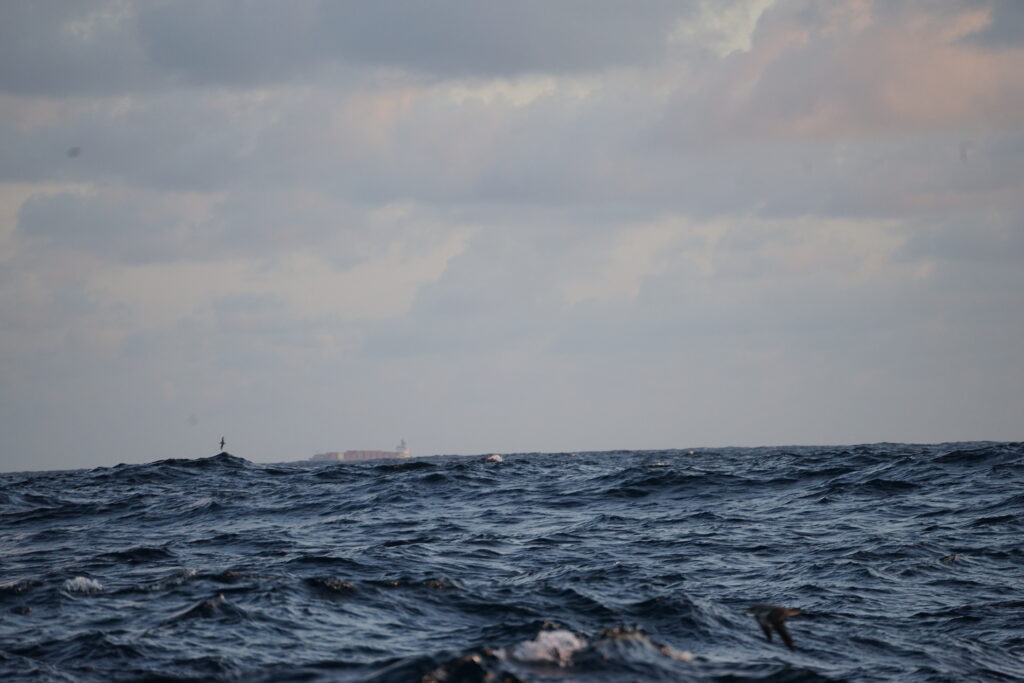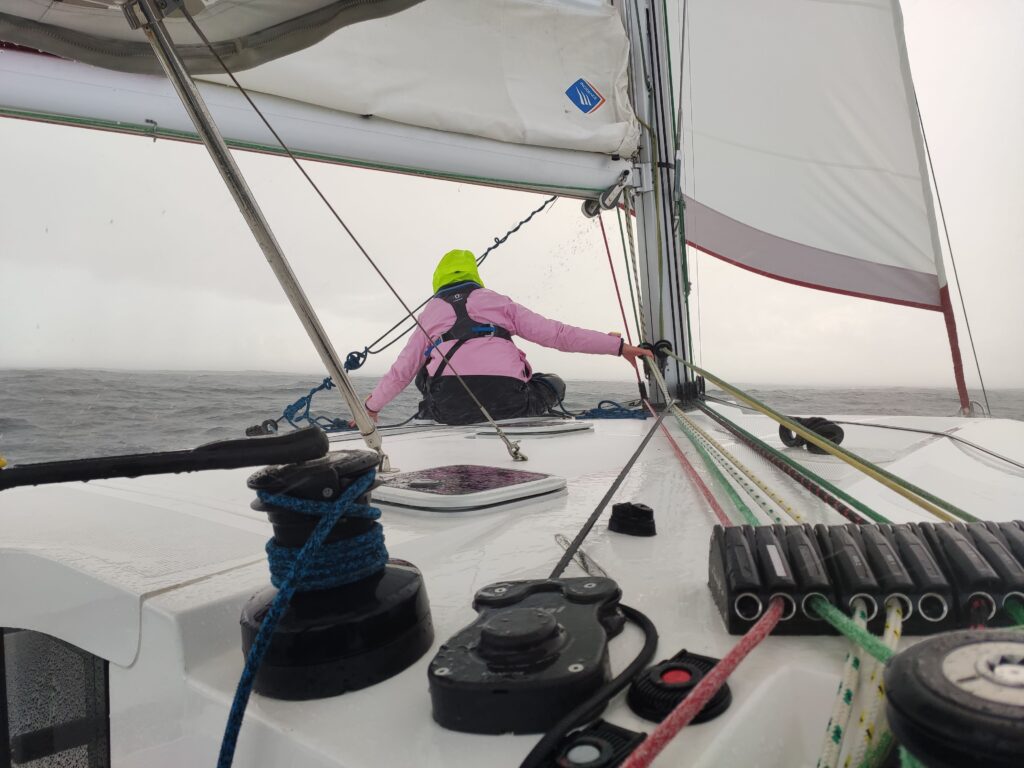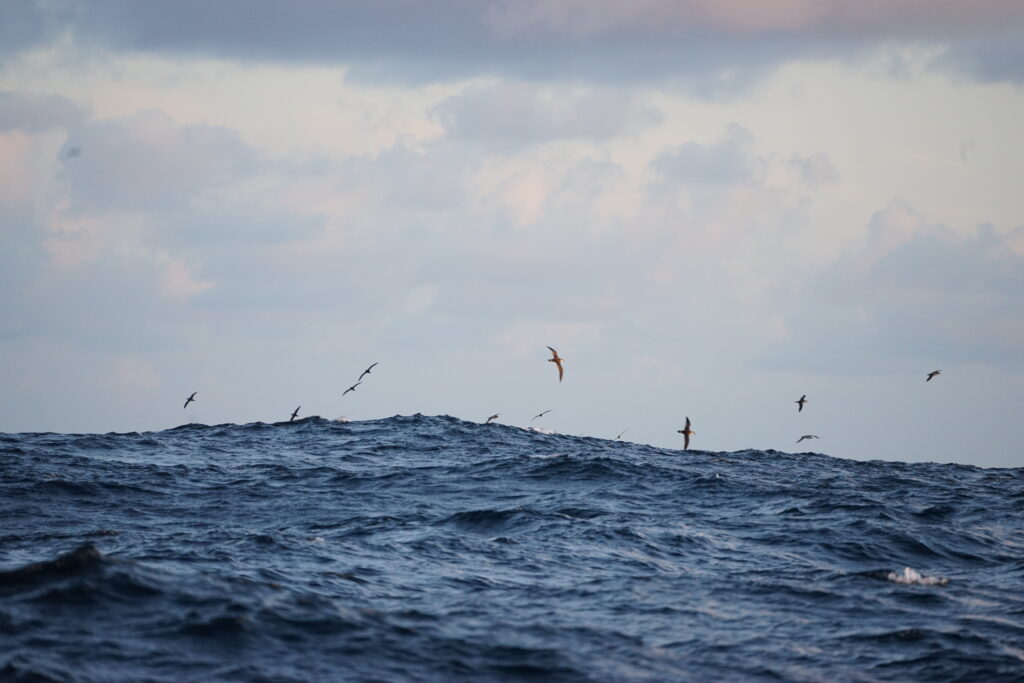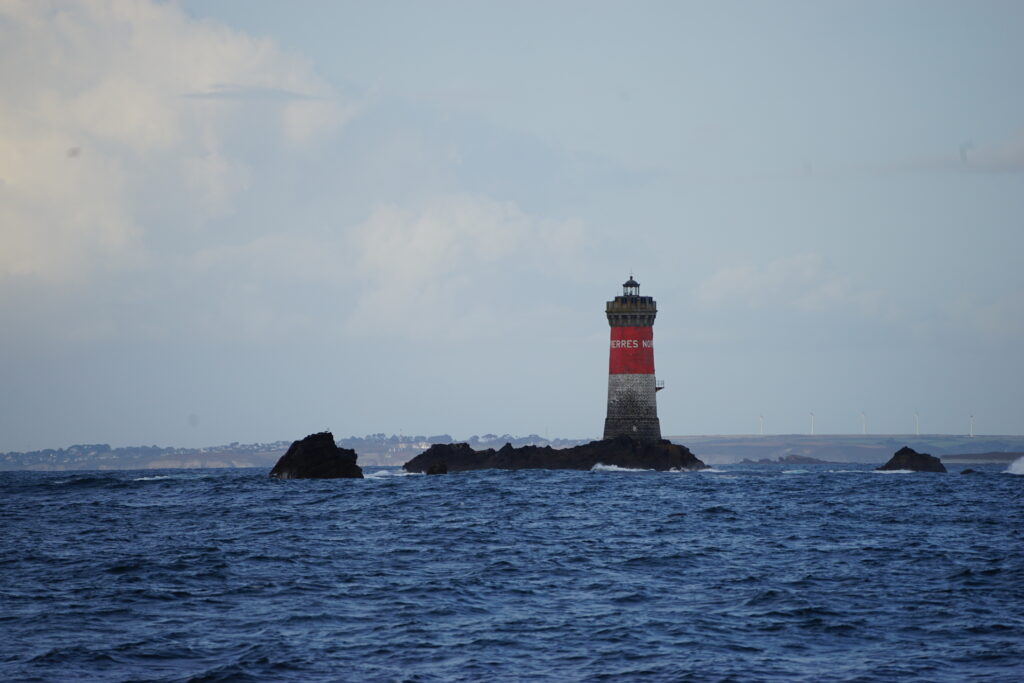Being stuck in Dartmouth for a week, we looked at the weather daily. Our initial plan was, to sail along the Cornish coast to Falmouth, and, if the weather allowed it, cross over to the Scilly Isles. But we quickly realised that we had to scrap our plans, as the weather turned to its worst. One storm after another was approaching the English Channel bringing with it large waves. We couldn’t even sail along the coast to Plymouth as 30 kts of wind straight against our bow in 3 meter waves was just not our idea of a nice day of sailing.

After a week in Dartmouth, we finally saw a short weather window, which would allow us to make some progress. A few days later the next storm would hit, so we realised that we had to leave England sooner than planned because we would not get many more chances anytime soon.
Therefore we planned our crossing. The wind would have allowed us to sail the 450 nm (about 830 km) directly to Gijon, Spain in about three days. However, the previous storm left behind a swell of three meters. We knew that the English Channel and the Bay of Biscay were quite challenging for sailors to cross, especially at this time of year (you shouldn’t really attempt a crossing any later than August because of the frequent storms coming from the North Atlantic). For this reason, our Plan B was to only cross the English Channel and make landfall in France.
We headed off in the evening after the winds had lowered as our weather window was quite short (we still had 30 kts about two hours earlier on the very sheltered Dart River). The first hour we made good speed and cooked some pasta for dinner that we had prepared in advance while still moored. But not looking at the horizon for 2 seconds and being inside was already too much and seasickness took over with Jenny throwing up for the first time. I was feeling quite sick as well. After we both had one spoonful of pasta, I suggested to turn back, as it would only get worse during the night. Jenny did not want to hear a thing about turning around, so we went on.

The only thing helping us against the seasickness was lying down and trying to sleep, so we started doing our watches in shifts. I was mostly lying on the bench in front of the wheel during my shifts with eyes closed in the hope of the seasickness not getting any worse, and every couple of minutes I had a look at the AIS and around us to see if any other ships were on a collision course. The Channel is a busy shipping lane with lots of large cargo ships and we also went right through a very active fishing hotspot. The only thing we could see though were the small distant lights from other ships disappearing again behind the next big wave.

Although Jenny had to throw up many times, she insisted on continuing her watches as usual, and I gladly took my breaks to get an hour of rest, if you can call it that. With at least 3-meter waves from the front and side, we were thrown around quite a bit. And as we already started feeling seasick while taking off our lifejackets inside we just tried to sleep on the bench next to our table in our mostly wet and cold sailing gear shivering all night.

Once suddenly the wind picked up from 18 to around 30 kts in seconds and we both had to run to reef our sails (decrease our sail area). Two reefs in the main and the genoa while the rain was pouring down. We had sailed directly into a squall, a big rain cloud that had formed in the Atlantic Ocean and brought a lot of wind with it. As quickly as it came the wind dropped again, but we had no energy left to put our sails back up. The next squall could also be just around the corner and you always get surprised by them at night as you cannot see them approaching. So with only 4-5 kts of boat speed we made slow progress, but progress nonetheless. We were very glad to have left our reefs as we hit a couple more squalls leaving us drenched. We at least had one thing cheering us up a bit. Every hour or so a couple of dolphins would come by and follow our boat, making sure we were still going…

Once the sun came up we finally had our first chance to see the sea state. Big blue walls the size of houses approaching us, raising our boat in a matter of seconds multiple meters up and then down again. Although uncomfortable it was quite impressive, and it did not look as if it would get any better soon.
We reached Ile d’Ouessant around noon, a very wild and rocky island a couple of miles off the most western point of France. Not having eaten or drunk anything for almost a day because of the seasickness, we had used up all our energy. We have never felt more exhausted in our lives. Continuing this for two more nights over the Bay of Biscay did not seem possible and we decided to go with our Plan B and go to one of our ports of refuge (dt. Fluchthafen), namely Brest. Since we rounded Ouessant on its western side, this meant that we had to sail another 4 hours to the east into Bade de Brest. So we reached Brest after nightfall after 28 hours and 170 nm at sea at a very sheltered and quiet harbour with no waves. I think you can imagine how relieved we were!

The light house Pierre Noir south of Oussant.
We knew that we were both not resistant to seasickness, as most people are not, but have never felt really bad. So far we have never found our limit, now we know. And we definitely learned a couple of things on this passage. Firstly, we will not go out into the waves just before nightfall, as you lose all orientation and you will notice the lack of sleep very quickly. And secondly, next time we’ll take some seasickness medication beforehand.
This is the not-so-fun part of sailing, but we won’t give up that easily!
Arme, seekranke und so tapfere Jenny! Aber sehr gut, habt Ihr mit den ganz grossen Schwierigkeiten jetzt schon geübt und daraus gelernt! Jetzt soll sich das Wetter wieder beruhigen für die nächste Zeit – laut Prognosen. Gute Weiterfahrt!